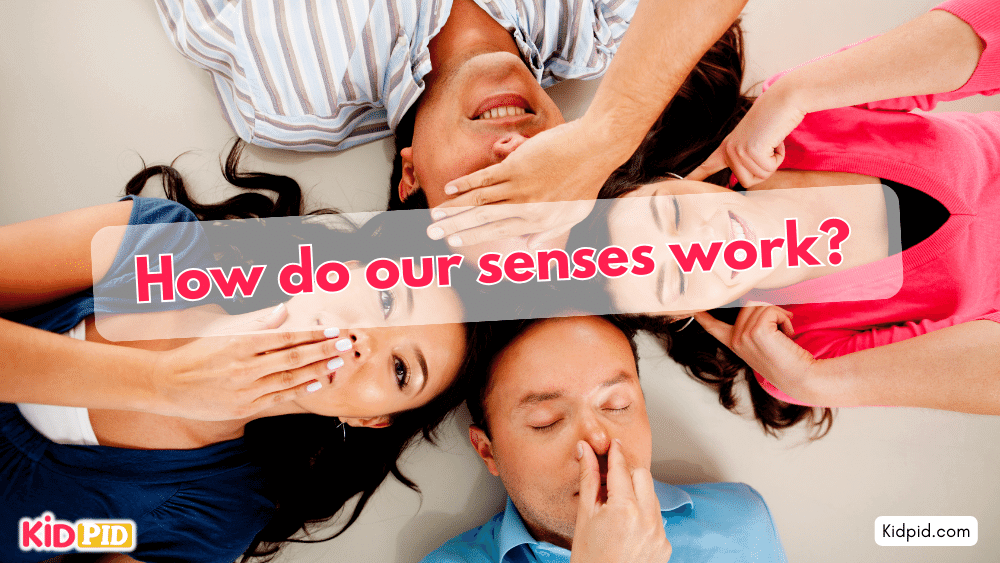Our senses work by converting different types of physical or chemical stimuli from our environment into electrical signals that the brain can interpret. This process allows us to perceive the world around us.
Contents
MCQs
1. What role do sensory receptors play in our perception of the environment?
A. They generate electrical energy.
B. They serve as passageways for chemical substances.
C. They convert stimuli into electrical signals for the brain.
D. They process the electrical signals into emotions.
Answer: C. They convert stimuli into electrical signals for the brain.
Explanation: Sensory receptors are specialized cells that detect specific types of stimuli and convert them into electrical signals, which are then sent to the brain for interpretation.
2. Where does the processing of sensory information primarily take place?
A. In the sensory organs.
B. In the muscles and glands.
C. In the brain.
D. Throughout the entire body.
Answer: C. In the brain.
Explanation: While sensory receptors detect and convert stimuli into electrical signals, the brain is the primary location where this information is processed and interpreted, allowing us to understand and react to our environment.
3. How does the sense of taste primarily function?
A. Through the detection of sound waves.
B. By sensing temperature changes.
C. By reacting to chemical substances in foods and drinks.
D. Through the perception of light.
Answer: C. By reacting to chemical substances in foods and drinks.
Explanation: The sense of taste operates through the detection of chemical substances in foods and drinks. Taste buds on the tongue contain receptors that respond to these chemicals, allowing us to taste.
4. What allows us to perceive different smells?
A. Vibrations in the air.
B. Chemicals in the air that interact with receptors in the nose.
C. Changes in light intensity.
D. Variation in sound frequencies.
Answer: B. Chemicals in the air that interact with receptors in the nose.
Explanation: Olfaction uses chemoreceptors that create signals processed in the brain that form the sense of smell. In humans, it occurs when an odor binds to a receptor within the nasal cavity, transmitting a signal through the olfactory system.
Read More
